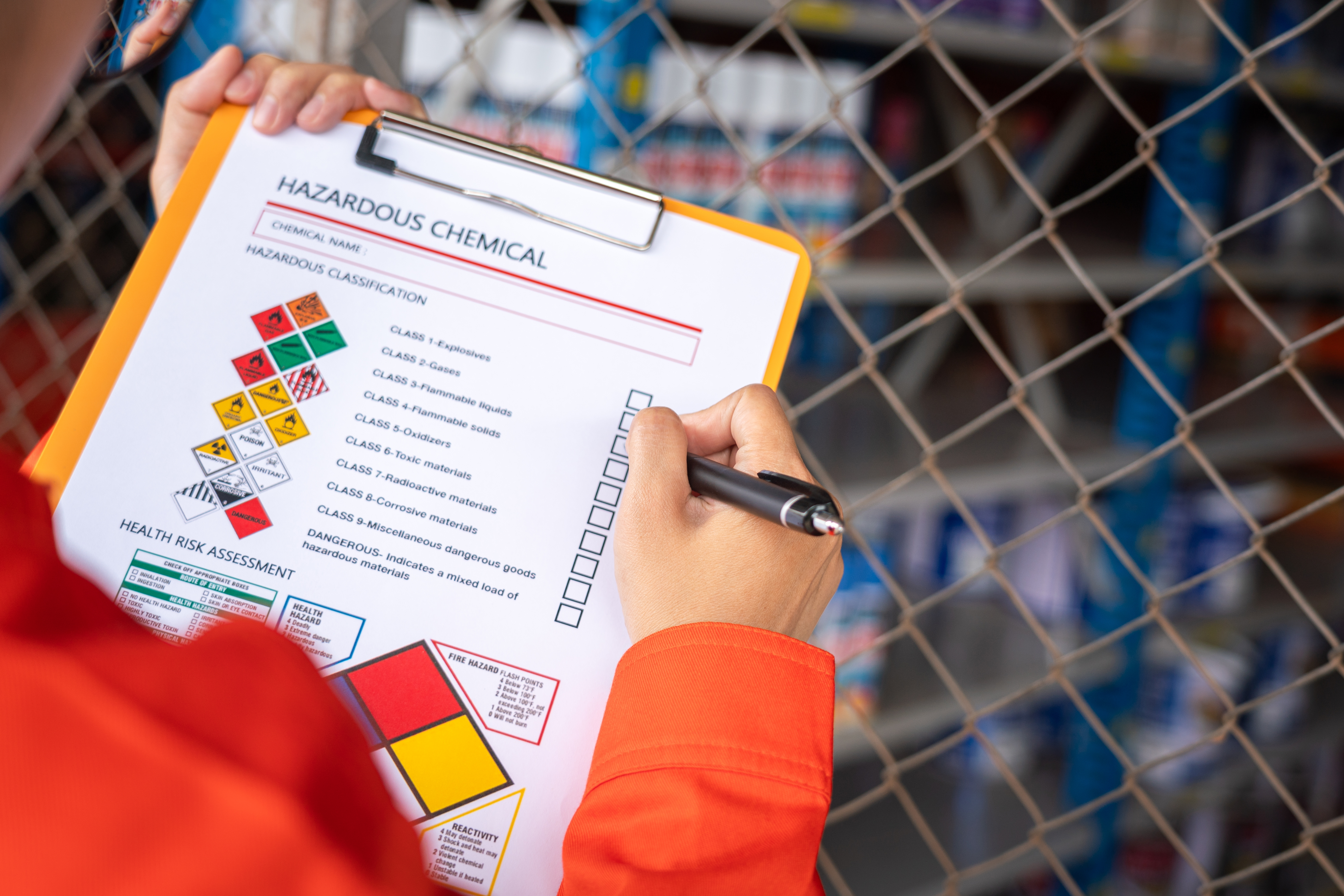Contents
How To Implement a Safety Management System
30 December 2024
Dealing with a workplace incident is never easy, especially when safety protocols fall short. But what if you could stop incidents before they happen? Implementing a proactive safety management system is key to doing just that.
At its core, a safety management system is an organized, company-wide approach that enables businesses to operate smoothly while making risk-based decisions with confidence. With a robust safety management system in place, companies can ensure that every product or service meets top safety standards, supporting safe and efficient operations across the board.
The first step? Build a detailed plan that not only outlines the steps to implementation but also emphasizes why this investment is essential. This clarity will help gain support from senior management and stakeholders, setting the foundation for a safer workplace.
What Is the Purpose of a Safety Management System?
While you might already have protocols in place around health and safety, a safety management system makes obtaining a clear overview of the health and safety across an organization much easier. The ultimate goal of implementing a safety management system is to identify a systematic approach to managing safety risks within the workplace.
While health and safety are important to all businesses, some industries have a naturally more dangerous working environment than others, like manufacturing and construction. It’s these industries where the implementation of a health and safety system is especially important.
Having a health and safety management system in place is also key to ensuring regulatory compliance with EHS authorities, such as OSHA, HSE or Safe Work Australia.
7 Elements of a Safety Management System
1. Employee Engagement
To really get the most out of your safety management team, it’s essential that employees engage in the organization’s commitment to risk management.
There are many ways to boost employee engagement when it comes to health and safety. One way would be for companies (in line with the relevant OSHA, HSE or Safe Work Australia guidelines) to create an employee safety committee. This would provide a forum for members of the management team and employees to come together and resolve any issues around health and safety.
Providing the right resources is one more effective way to help employees engage with health and safety. Whether it’s training manuals or equipment, providing staff with effective tools will encourage them to be more safety-conscious.
2. Employee Training
In any safety management system, there is a wide range of training that must be provided to employees to comply with regulations. This training should focus on areas relevant to your particular organization or sector. Typical areas of employee training would include electrical safety, removal of PPE and safety symbols.
Make sure that your staff isn’t lost when it comes to knowing what’s going on with health and safety. Putting time into sharing clear guidelines, providing training courses and carrying daily team briefings ensures your team has all the information required at their disposal to stay safe.
3. Compliance with Regulations
A quintessential part of any safety management system is EHS compliance software. Your safety management system should always align with the relevant regulatory body.
Complying with regulations is an ongoing process, as guidelines are regularly revised to ensure the most effective safety practices are being recommended. There’s no way around it—make sure to check regulations regularly!
4. Safety Audit
Another non-negotiable is the safety audit. This step involves taking proactive measures to identify any potentially dangerous or unsafe working conditions, such as leaks, uneven surfaces or spills.
Safety audits require regular safety inspections to ensure all possible hazards are identified quickly and actions are taken to either control or eliminate all risks and hazards.
5. Incident Reporting
Incident reporting is invaluable to the overall success of a safety management system. Safe working environments rely on precise tracking of all incidents, from initial reporting to alerting and responding. Through this initial reporting, the safety management system can prioritize safety process improvements and reduce the likelihood or reoccurrence through appropriate action management.
Relevant guidelines from governing bodies address the requirements around maintaining records of workplace injuries. Organizations should be aware of these in order to remain compliant with workplace incident protocols.
6. Analysis
To maximize the benefit of incident reporting, gathered data should be analyzed to provide a clearer understanding of incident rates and patterns within your organization.
While it's fairly straightforward to identify and eradicate areas that are causing recurring incidents, an effective safety management system allows for proactive analysis that can identify potential hazards. Analyzing data for trends will allow your organization to anticipate future hazards and reduce accidents altogether.
7. Communication
Within each element of a successful safety management system, there must be clear and effective communication of the safety hazards, guidelines and warnings, as well as regular updates on the progress status of each area.
Regular communication helps ensure that vital information isn't ignored or misunderstood. Clear communication enhances the chance of avoiding accidents. You can also encourage employees to vocalize important health and safety concerns and report on near misses by providing clear health and safety communication channels.
How To Implement a Safety Management System
Implementing a successful safety management system requires a systematic, detailed and organized approach. For best results, this process is broken down into key areas:
Step 1: Gain Management Approval
Before you implement, you must gain relevant senior management approval and full management commitment to creating and sustaining a strong safety performance in the workplace.
This stage includes presenting to senior management the benefits of putting a safety management system in place. Reference should be made to:
-
Legal requirements
-
Safer working environment
-
Increased productivity
-
Happier employees
-
Reduction in financial costs due to a decrease in incidents
Upper management is likely going to discuss financial impact, so make sure to highlight the costs of not implementing a safety management system.
It may also be beneficial to provide examples of instances where companies failed to create a safe working environment and paid a high price for it – such as the 300 employers who racked up to $4 million in penalties after breaching U.S. workplace safety regulations by putting their workers at risk during the pandemic.
Step 2: Define Specific Requirements of the System
Unfortunately, we can’t tell you exactly what specific requirements your safety management system requires. A number of variables will determine this.
These include:
-
Size of the business
-
Number of employees
-
Sector
-
Equipment used by employees – known as a job hazard analysis.
Using a risk matrix to categorize all possible hazards and risks will give your EHS department a clearer overview of the requirements of your specific company.
Step 3: Implement the Safety Management System
So, you’ve created your program, now what? Start implementation with appropriate training and communication. Alerting your employees to the new system will ensure that it runs smoothly and to its full potential.
Don’t keep your employees in the dark. Make sure they know what’s going on and what is required from them each working day.
Elements of a safety management system include:
-
Employee engagement
-
Employee training
-
Compliance with regulations
-
Safety audit
-
Incident reporting
-
Analysis
-
Communication
Step 4: Evaluate Performance
You may have implemented the system, but the work doesn’t end there. Now it’s important to regularly measure safety performance. By tracking this activity, your team can identify areas that need further improvement, surveillance or adjustment for greater impact.
Analyzing results will give you a better understanding as to whether the system is working as intended and whether additional tools are needed.
Calculating the Return on Investment (ROI) of the safety management system may also prove helpful in establishing whether the system is beneficial for the company. This data will likely also be required by senior management to assess the safety management system from a fiscal perspective.
Step 5: Management Review
Don’t forget that senior management must also review the system. This process is performed over a specific period of time, usually quarterly or annually. Factors that senior management may focus on are:
-
Overall trends in workplace incident rate
-
Employee feedback/satisfaction
-
Effectiveness in identifying hazards and areas of deficiency
-
Reduction in expenditure related to workplace incidents
Step 6: Maintain a Structure for Employee Feedback
Give employees a voice by listening to feedback. Having regular evaluations regarding your overall safety and any suggestions for improvement from employees will encourage them to get involved and take health and safety seriously.
Step 7: Keep Your Safety Management System Procedures Up to Date
Because safety regulations are constantly evolving, any effective and compliant safety management system should be regularly updated to remain in line with the latest measures. Minimal friction should be caused when updating changes that have been identified through the process.
How Can Software Help?
Rolling out a safety management system is not always easy. It involves a range of steps and requires sharp attention to detail, a high level of organization and careful planning.
Software is a beneficial tool that can not only significantly streamline the process for you but also help support your team throughout each step of the journey. Implementing software also reduces risks and hazards, minimizes costs and contributes to the overall morale of your employees.
Take the leap – invest in your health and safety department and experience a smooth safety management system rollout, with support each step of the way.
To see how our incident management software can support your business, visit our solutions page below!

RELATED BLOGS

Navigating the EU’s Chemical Rules and Regulations: Part 2
20 February 2024 - Team Evotix
Compliance with the EU’s chemical rules is not just a regulatory requirement but a gateway to numerous advantages for manufacturers. Ensuring public health and protecting the environment is essential..
.jpg)
What Is Green Chemistry and What Does It Mean for EHS&S?
4 February 2025 - Team Evotix
Proper chemical management is crucial to safe operations in several industries. Companies that handle hazardous chemicals have long been subject to strict regulations, which have only grown more..

What Is EHS Compliance and Why Do Businesses Need It?
19 December 2024 - Team Evotix
EHS compliance refers to the standards that outline the rules, policies and protocols needed to maintain a safe, healthy and eco-friendly work environment.
